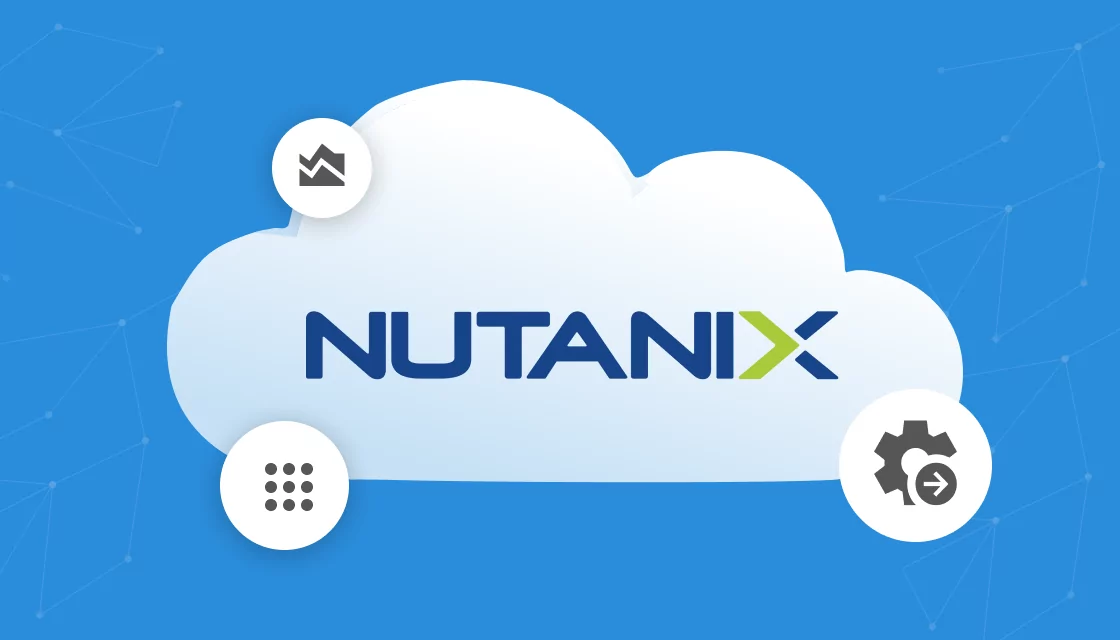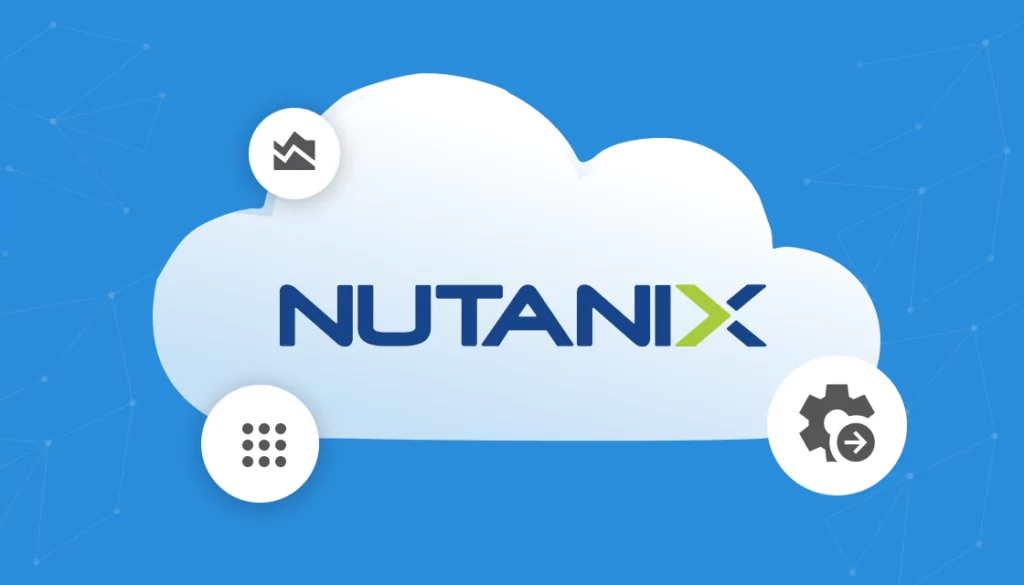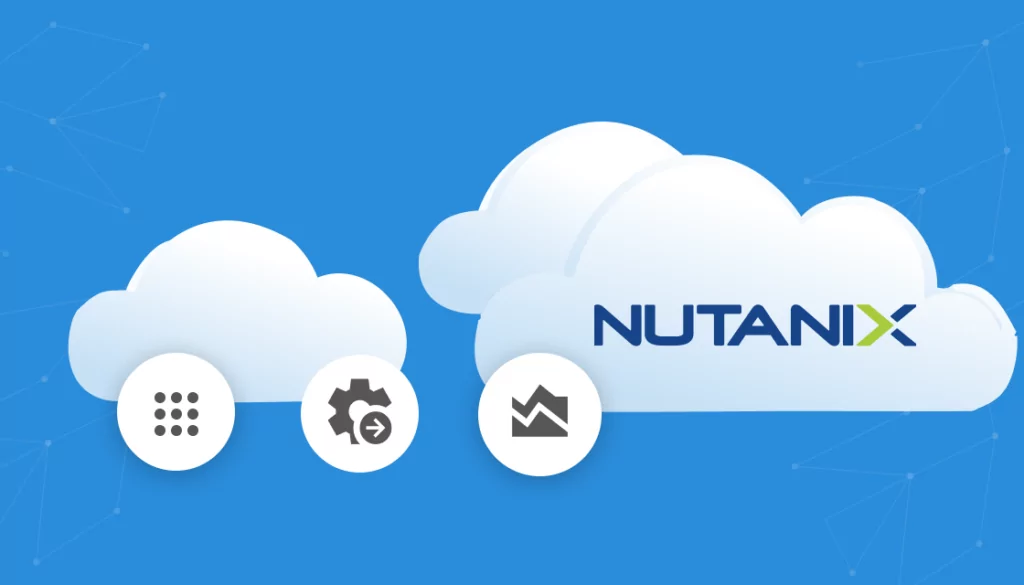What Is Nutanix?
Nutanix is a cloud computing company that specializes in hyper-converged infrastructure (HCI) solutions. It simplifies data center operations by integrating compute, storage, networking, and virtualization resources into a single system. This reduces complexity and enhances scalability, making it easier for organizations to manage their IT environments and adapt to changing demands.
The company’s technology is built on a software-defined architecture that allows for flexible deployment across various environments, including private clouds, public clouds, and hybrid models. By abstracting the hardware layer and focusing on software, Nutanix enables organizations to integrate their existing investments with cloud technology.
This is part of an extensive series of guides about hybrid cloud.
Table of Contents
ToggleThe History of Nutanix
Nutanix was founded in 2009 by Dheeraj Pandey, Mohit Aron, and Ajeet Singh. Initially, it focused on HCI, including how storage, compute, and virtualization are managed across data centers.
The company’s early success was marked by its ability to offer a consolidated solution that targeted VMware customers, later expanding to support other hypervisors as VMware introduced its competing VSAN platform.
Nutanix has since evolved from a provider of hyper-converged appliances to a software-centric entity. By transitioning towards a software-defined approach, Nutanix broadened its compatibility with various hardware vendors and cloud services, enabling integration with ecosystems like AWS and Microsoft Azure.
Key Nutanix Products and Tools
Nunanix offers its technology within the unified Nutanix Cloud Platform, or as individual building blocks for hybrid infrastructure. The following diagram shows the complete platform. Below we describe more specific packages and service offerings.
Source: Nutanix
Nutanix Cloud Infrastructure
Nutanix Cloud Infrastructure (NCI) serves as a foundation for hybrid cloud environments, enabling organizations to standardize on a secure hyperconverged infrastructure. It supports the delivery of applications and data at any scale and across any cloud, simplifying cloud complexity and ensuring service availability.
Nutanix cloud infrastructure includes the following key components:
- AOS Storage: Provides consistent and predictable performance for demanding applications with data locality, foolproof resiliency through advanced distributed consistency algorithms, and unmatched flexibility with logical storage policies.
- Flexible and open compute: Offers a choice of leading hypervisors (VMware ESXi, Microsoft Hyper-V, or built-in AHV), integrated virtualization with AHV, and support for cloud-native Kubernetes applications.
- Automated and secure networking: Includes microsegmentation for malware prevention, virtual networking for robust multi-tenancy, and centralized network management for consistent configuration across environments.
- Nutanix Cloud Manager: Described in more detail below.
Nutanix Cloud Manager
Nutanix Cloud Manager (NCM) simplifies multicloud governance, offering a unified platform for intelligent operations, self-service and orchestration, security compliance, and cost control. It provides IT teams with tools to automate daily tasks, optimize resource allocation, and ensure regulatory compliance across cloud environments.
NCM simplifies application management through self-service capabilities and centralizes IT governance with role-based access controls. It enhances financial oversight through cost governance features for budgeting, showback, and chargeback processes. NCM also unifies security operations with monitoring and remediation across clouds.
Nutanix Prism
Nutanix Prism is a management tool that simplifies the administration of multicloud environments. It offers a unified control plane for overseeing various aspects of the infrastructure, including the management of storage, compute, virtualization, and networking resources across private and public clouds.
Prism aims to enhance operational efficiency and reduce the time spent on routine tasks. It leverages automation and AI to provide operational insights, providing intelligent recommendations for resource optimization, predictive analytics for capacity planning, and automation to accelerate workflows.
Source: Nutanix
Nutanix Unified Storage
Nutanix Unified Storage simplifies the management of diverse data types across core, edge, and cloud environments by consolidating file, object, and block storage under a single platform. It offers data services including analytics, lifecycle management, cybersecurity measures, and integrated data protection features.
The platform can adapt to the fast-changing demands of applications and data management, making it suitable for various use cases. It supports a range of workloads from mission-critical applications to big data analytics across on-premises and cloud deployments.
Nutanix Database Service
Nutanix Database Service (NDB) accelerates application development and simplifies database management by offering a hybrid multicloud Database-as-a-Service (DBaaS) for a range of database engines. It supports Microsoft SQL Server, Oracle, EDB, PostgreSQL, MySQL, MariaDB, and MongoDB.
This service enables organizations to enhance their development processes by easily provisioning, cloning, and refreshing databases directly from their development environments. By automating database administration tasks, NDB ensures consistency in best practices and frees up time for database administrators.
Nutanix Move
Nutanix Move simplifies the migration of virtual machines (VMs) to Nutanix AHV, acting as a specialized VM appliance within the target AHV cluster. It uses a combination of software services including a management server, agents for source and target environments, disk readers, and writers. It handles the complexities of different source environments.
The management server organizes source and target cluster information along with migration plan details. Source agents then gather data from the original environment and interface with disk readers to schedule migration tasks. Target agents prepare the destination by managing inventory information and preparing for data reception.

Lanir specializes in founding new tech companies for Enterprise Software: Assemble and nurture a great team, Early stage funding to growth late stage, One design partner to hundreds of enterprise customers, MVP to Enterprise grade product, Low level kernel engineering to AI/ML and BigData, One advisory board to a long list of shareholders and board members of the worlds largest VCs
Tips from the Expert
In my experience, here are tips that can help you better understand Nutanix’s ecosystem and alternatives:
-
Evaluate hybrid cloud needs
Assess the solution’s capabilities to integrate seamlessly with your existing cloud strategy, especially in hybrid scenarios.
-
Focus on TCO analysis
Beyond initial costs, consider long-term management, licensing, and scaling expenses for a realistic total cost of ownership.
-
Consider detailed workload profiling
Understand specific application and workload requirements to match them to the right HCI solution.
-
Leverage native automation
Utilize built-in automation and orchestration tools to simplify infrastructure management.
-
Implement precise dependency mapping
Use advanced mapping tools to identify and manage dependencies, minimizing risks during infrastructure changes or migrations.
Nutanix Limitations
When evaluating Nutanix, you should be aware of the following limitations reported by users on the G2 platform:
- Cost considerations: Nutanix solutions can represent a significant investment, especially for small to medium-sized businesses. The initial setup and ongoing maintenance costs can be higher compared to other HCI solutions in the market.
- Complexity in migration: Transitioning from traditional data center architectures or other HCI solutions to Nutanix can be complex. Organizations may face challenges in migrating existing workloads, requiring careful planning and possibly external support.
- Hardware compatibility: Although Nutanix supports a range of hardware platforms, there are specific requirements for compatibility. Organizations must ensure their existing hardware is compatible or may need to invest in new hardware.
- Learning curve: New users might experience a steep learning curve with Nutanix ecosystems, especially if they are not familiar with hyper-converged infrastructure concepts. Adequate training and resources are essential for smooth onboarding.
Nutanix Alternatives and Competitors
In light of these limitations, here are a few alternatives you should consider.
1. VMware vSphere
VMware vSphere is an enterprise-grade virtualization platform. It allows for the consolidation of applications, improving utilization. By enabling the deployment of virtual machines with its ESXi hypervisor, vSphere provides a foundation for cloud computing.
Key features include:
- Lifecycle management: Simplifies host configuration management at a cluster level, enabling IT teams to detect and address configuration drifts.
- Tanzu Kubernetes Grid integration: Allows for simplified operations of Kubernetes on-premises.
- Reduced planned downtime for upgrades: Minimizes interruptions during upgrades by allowing seamless updates of vCenter instances.
- Enhanced performance for AI/ML workloads: Supports up to 16 virtual GPUs (vGPUs) per VM and integrates NVLink and NVSwitch technologies, improving the performance of demanding AI/ML workloads, accommodating larger datasets and complex computational requirements.
Source: VMware
Learn more in our detailed guide to Nutanix vs VMware
2. Microsoft Azure Stack HCI
Microsoft Azure Stack HCI is a hyperconverged infrastructure solution designed to run Windows and Linux workloads alongside their storage in a hybrid environment that bridges on-premises systems with Azure services for cloud-based management and monitoring. It uses Microsoft’s software ecosystem and Azure’s cloud services to offer a platform for virtualized data centers.
Key features include:
- Hybrid capability: Integrates on-premises data centers with Azure services, providing a unified management experience through the Azure portal.
- Flexible deployment options: Users can either purchase integrated systems from Microsoft hardware partners with the operating system pre-installed or opt for validated nodes to install the OS themselves.
- Built on proven technologies: Uses Microsoft technologies like Hyper-V for virtualization, Storage Spaces Direct for storage, and Azure management services to ensure reliability.
- Scalability and performance: Supports configurations ranging from 2 to 16 servers in a cluster, allowing organizations to start small and scale as needed.
Source: Microsoft
3. HPE SimpliVity
HPE SimpliVity is an HCI solution designed to simplify IT operations by consolidating all data center services and devices into a single, integrated platform. It aims to make management easier while reducing the total cost of ownership. The solution integrates computing, storage, and networking with data services.
Key features include:
- Data efficiency: Improves data efficiency by deduplicating, compressing, and optimizing data at inception across the network. This process occurs once and remains in effect across all stages of the data lifecycle.
- Built-in resiliency: Ensures high availability and resilience through built-in backup and disaster recovery features. It allows for rapid recovery of VMs.
- Simplified management: Administrators can globally manage virtualized workloads through a single console, simplifying tasks such as cloning, moving VMs, or applying policies across multiple sites.
- Scalability: Organizations can start small and scale out incrementally with new nodes, enabling predictable expansion.
Source: HPE
4. Scale Computing HC3
Scale Computing HC3 is a hyperconverged infrastructure solution designed to simplify operations, enhance scalability, and improve resource efficiency within IT environments. It integrates servers, storage, and virtualization into one system to streamline management and reduce operational overhead. This solution is particularly suited for organizations looking to consolidate their IT infrastructure or deploy edge computing capabilities.
Key features include:
- Simplicity: Eliminates complex management tasks, reducing the time IT administrators spend on routine operations.
- Scalability: Supports seamless scaling without requiring a prediction of future needs. Users can mix hardware of different generations or capacities in the same cluster.
- Manageability: Streamlines infrastructure oversight with centralized management combined with cloud-based and local automation features.
- High availability: Built with redundancy for critical components and includes intelligent self-healing capabilities. Automatic failover for VMs ensures continuous operation in the event of hardware failures.
Source: Scale Computing HC3
5. Pivot3
Pivot3 is a hardware device that combines storage, compute, and virtualization into a single platform. This solution is designed to simplify data center operations by consolidating these resources, which allows for dynamic aggregation, load-balancing, and optimization. It is suitable for organizations looking to deploy VDI solutions and enhance their business continuity plans.
Key features include:
- Scalable architecture: Uses cluster-aware nodes that enable simple scalability for hyper-converged storage and compute resources.
- Enterprise-class Horizon suite: Delivered in an appliance model, optimized for back-up and recovery operations.
- Graphics acceleration options: Suitable for environments requiring intensive graphic processing capabilities such as VDI deployments for remote power users.
- High fault tolerance: Designed with resiliency in mind, can withstand the simultaneous failure of an entire node plus two hard drives.
Learn more in our detailed guide to Nutanix competitors (comin soon)
Source: NexGenWorks
Nutanix Migration Made Easy with Faddom
Faddom’s application dependency mapping provides critical information you’ll need before migrating workloads to Nutanix or its competitors, automatically discovering all VM instances and their dependencies. Faddom is agentless and doesn’t require credentials to scan your environment. It is cheap, starting at $10K/year, and maps the entire environment in real-time, automatically updating maps 24/7. One person can map an entire data center in an hour.
Learn more about Faddom for data center migration or try it yourself with a free trial
See Additional Guides on Key Hybrid Cloud Topics
Together with our content partners, we have authored in-depth guides on several other topics that can also be useful as you explore the world of hybrid cloud.
Cloud Migration
Authored by Faddom
- [Guide] Data Center Migration: Complete Guide 2025
- [Guide] Cloud Migration to AWS: 3 Phases, 7 Rs and 5 Free Tools to Get You Started
- [Blog] How Secure is the Cloud?
- [Product] Faddom | Instant Application Dependency Mapping Tool
Disaster Recovery
Authored by Faddom
- [Guide] IT Disaster Recovery: What is It?
- [Guide] Disaster Recovery in Azure: A Practical Guide
- [Product] Faddom | Instant Application Dependency Mapping Tool
Data Privacy
Authored by Imperva





